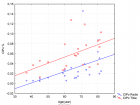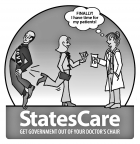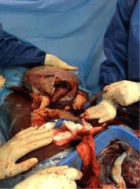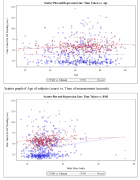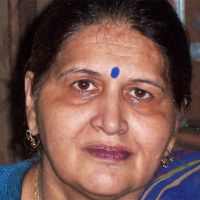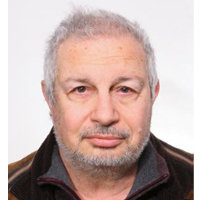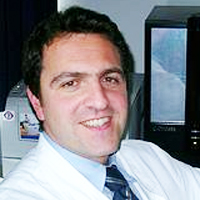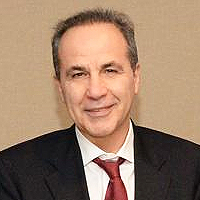Abstract
Original Article
Parents Take-On Concussion: Advances in Sideline Research and Culture in Youth Sports
Arlene Silverio, Scott Briggs, Lisena Hasanaj, Jeffrey Hurd Jr, Max Lahn, Liliana Serrano, Lucy Cobbs, Jenelle Raynowska, Rachel Nolan, Joel Birkemeier, Dennis Cardone, Steven L Galetta and Laura J Balcer*
Published: 16 March, 2017 | Volume 2 - Issue 1 | Pages: 009-019
Identifying concussion and initiating removal from play is challenging for even the most diligent youth sports organizations. Empowering parents to implement removal from play protocols and sideline testing may be the most practical plan at community levels to protect young athletes. We developed paradigms for community-based youth sports teams that incorporated both standard concussion protocols and research investigations. The research studies were designed to determine how sideline tests of vision, cognition and balance augment the capacity for parents and other responsible adults to identify youth athletes with concussion in ice hockey, football, lacrosse and cheerleading. Research-based sideline tests were performed at pre-season baseline sessions and during the season at the time of injury or as soon as symptoms were recognized by trained volunteer parent team testers. The combination of standard concussion protocols and research studies were performed for 510 athletes, aged 5-17 years, over 2.5 years through 5 athletic seasons. To implement the protocols and studies, approximately 80 student volunteers and parents were educated and trained on early concussion recognition and on baseline and sideline test administration. Over 80% of parent-identified head injuries were physician-confirmed concussions. Of the sideline tests performed, over two-thirds were administered within 24 hours of injury; the rest were performed within an average of 2.6 days post-injury since some athletes had delayed development of symptoms. Removal from play guidelines and standard concussion evaluation protocols were maintained in the context of the sideline testing research investigations. Based on this observational study, parents of youth athletes can be successfully empowered to perform rapid sideline tests in the context of existing concussion protocols. Implementation of objective testing may improve concussion identification and shift the culture of advocacy and responsibility towards parent groups to promote safety of young athletes. Ongoing investigations will further examine the impact of these programs on concussion management in youth sports.
Read Full Article HTML DOI: 10.29328/journal.jsmt.1001003 Cite this Article Read Full Article PDF
Keywords:
Concussion; Parents; Youth sports; Baseline testing; Sideline testing
References
- Bryan MA, Rowhani-Rahbar A, Comstock RD, Rivara F, Seattle Sports Concussion Research Collaborative. Sports- and recreation-related concussions in US youth. Pediatrics. 2016; 138. Ref.: https://goo.gl/pWaVrr
- McCrory P, Collie A, Anderson V, Davis G. Can we manage sport related concussion in children the same as in adults? Br J of Sports Med. 2004; 38: 516-519. Ref.: https://goo.gl/bjsSFT
- Sady MD, Vaughan CG, Gioia GA. School and the concussed youth: recommendations for concussion education and management. Phys Med Rehab Clin N Am. 2011; 22: 701-719. Ref.: https://goo.gl/NO3QBc
- Carman AJ, Ferguson R, Cantu R, Comstock RD, Dacks PA, et al. Expert consensus document: mind the gaps—advancing research into short-term and long-term neuropsychological outcomes of youth sports-related concussions. Nat Rev Neurol. 2015; 11: 230-244. Ref.: https://goo.gl/XDI4DX
- Centers for Disease Control and Prevention. Report to Congress on Traumatic Brain Injury in the US: Epidemiology and Rehabilitation. Atlanta, GA: National Center for Injury Prevention and Control; Division of Unintentional Injury Prevention, 2015.
- Toledo E, Lebel A, Becerra L, Minster A, Linnman C, et al. The young brain and concussion: imaging as a biomarker for diagnosis and prognosis. Neurosci Biobehav Rev. 2012; 36: 1510-1531. Ref.: https://goo.gl/tE7xej
- Rivara FP, Graham R. Sports-related concussions in Youth. JAMA. 2014; 311: 239-240. Ref.: https://goo.gl/PzOXiV
- Meehan WP, Mannix RC, OʼBrien MJ, Collins MW. The prevalence of undiagnosed concussions in athletes. Clin J of Sport Med. 2013; 23: 339-342. Ref.: https://goo.gl/61ayvM
- McCrea M, Hammeke T, Olsen G, Leo P, Guskiewicz K. Unreported concussion in high school football players. Clin J of Sport Med. 2004; 14: 13-17. Ref.: https://goo.gl/hfxcy4
- Chrisman SP, Quitiquit C, Rivara FP. Qualitative study of barriers to concussive symptom reporting in high school athletics. J Adolesc Health. 2013; 52: 330-335. Ref.: https://goo.gl/LcgvsZ
- Kroshus E, Garnett B, Hawrilenko M, Baugh CM, Calzo JP. Concussion under-reporting and pressure from coaches, teammates, fans, and parents. Soc Sci Med. 2015; 134: 66-75. Ref.: https://goo.gl/aJYKyy
- Pryor RR, Casa DJ, Vandermark LW, Stearns RL, Attanasio SM, et al. Athletic training services in public secondary schools: a benchmark study. J Athl Train. 2015; 50: 156-162. Ref.: https://goo.gl/Hwa8sU
- Chrisman SP, Schiff MA, Chung SK, Herring SA, Rivara FP. Implementation of concussion legislation and extent of concussion education for athletes, parents, and coaches in Washington State. Am J Sports Med. 2014; 42: 1190-1196. Ref.: https://goo.gl/Tzdl9r
- Rivara FP, Schiff MA, Chrisman SP, Chung SK, Ellenbogen RG, et al. The effect of coach education on reporting of concussions among high school athletes after passage of a concussion law. Am J Sports Med. 2014; 42: 1197-1203. Ref.: https://goo.gl/XRA32o
- Sports-Related Concussions in Youth: Improving the Science, Changing the Culture. Washington, DC: Sports-Related Concussions in Youth: Improving the Science. Changing the Culture. 2015; 180: 123-125. Ref.: https://goo.gl/ojzLyG
- Coghlin CJ, Myles BD, Howitt SD. The ability of parents to accurately report concussion occurrence in their bantam-aged minor hockey league children. J Can Chiropr Assoc. 2009; 53: 233-250. Ref.: https://goo.gl/YGUzWK
- Bloodgood B, Inokuchi D, Shawver W, Olson K, Hoffman R, et al. Exploration of awareness, knowledge, and perceptions of traumatic brain injury among American youth athletes and their parents. J Adolesc Health. 2013; 53: 34-39. Ref.: https://goo.gl/028syZ
- Lin AC, Salzman GA, Bachman SL, Burke RV, Zaslow T, et al. Assessment of parental knowledge and attitudes toward pediatric sports-related concussions. Sports Health. 2015; 7: 124-129. Ref.: https://goo.gl/VpGhgk
- Sullivan SJ, Bourne L, Choie S, Eastwood B, Isbister S, et al. Understanding of sport concussion by the parents of young rugby players: a pilot study. Clin J Sport Med. 2009; 19: 228-230. Ref.: https://goo.gl/2VwEVQ
- General Info on Concussion. Reston Raiders Hockey Club. 2016. Ref.: https://goo.gl/0eQBzf
- Ventura RE, Jancuska JM, Balcer LJ, Galetta SL. Diagnostic tests for concussion. J Neuroophthalmol. 2015; 35: 73-81. Ref.: https://goo.gl/2FDrSy
- Leong DF, Balcer LJ, Galetta SL, Liu Z, Master CL. The King-Devick test as a concussion screening tool administered by sports parents. J Sports Med Phys Fitness. 2014; 54: 70-77. Ref.: https://goo.gl/GMxVIJ
- The University of the State of New York. Guidelines for Concussion Management in the School Setting. 2016. Ref.: https://goo.gl/lQxNf6
- New York State Department of Health. When in Doubt Take Them Out! Fact Sheet for Coaches and Sports Officials. 2016. Ref.: https://goo.gl/Uu3AS4
- S. Department of Health and Human Services Centers for Disease Control and Prevention. Heads up Schools, A Fact Sheet for Parents. 2016. Ref.: https://goo.gl/wA1Dcw
- Galetta KM, Morganroth J, Moehringer N, Mueller B, Hasanaj L, et al. Adding vision to concussion testing: a prospective study of sideline testing in youth and college athletes. J Neuroophthalmol. 2015; 35: 235-241. Ref.: https://goo.gl/htyb0G
- Galetta KM, Liu M, Leong DF, Ventura RE, Galetta SL, Balcer LJ. The King-Devick test of rapid number naming for concussion detection: meta-analysis and systematic review of the literature. Concussion. 2016; 1. Ref.: https://goo.gl/lcuq6y
- Mrazik M, Dennison CR, Brooks BL, Yeates KO, Babul S, et al. A qualitative review of sports concussion education: prime time for evidence-based knowledge translation. Br J Sports Med. 2015; 49: 1548-1553. Ref.: https://goo.gl/nP7Pr5
- Chrisman SP, Schiff MA, Chung SK, Herring SA, Rivara FP. Implementation of concussion legislation and extent of concussion education for athletes, parents, and coaches in Washington State. Am J Sports Med. 2014; 42: 1190-1196. Ref.: https://goo.gl/yYksMG
- Newton JD, White PE, Ewing MT, Makdissi M, Davis GA, et al. Intention to use sport concussion guidelines among community-level coaches and sports trainers. J Sci Med Sport. 2014; 17: 469-473. Ref.: https://goo.gl/8Ek1WP
- Tjoumakaris FP, Eck B, Freedman KB, Pepe MD, Austin L, et al. Cost benefit analysis of sports medicine team coverage: is it worth our while? Orthop J Sports Med. 2013; 1.
- USA Hockey Concussion Management Program. USA Hockey. 2016. Ref.: https://goo.gl/dv0puj
- US Lacrosse Concussion Management Plan Guidelines for U-19 Programs. US Lacrosse. 2016.
- Youth Football Rules Book 2014. USA Football, Inc.
- Galetta KM, Brandes LE, Maki K, Dziemianowicz MS, Laudano E, et al. The King-Devick test and sports-related concussion: study of a rapid visual screening tool in a collegiate cohort. J Neurol Sci. 2011; 309: 34-39. Ref.: https://goo.gl/Rw9Fco
- Galetta KM, Barrett J, Allen M, Madda F, Delicata D, et al. The King-Devick test as a determinant of head trauma and concussion in boxers and MMA fighters. Neurology. 2011; 76: 1456-1472. Ref.: https://goo.gl/pcvNIN
Figures:
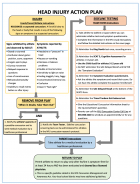
Figure 1
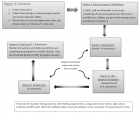
Figure 2
Similar Articles
-
Olfactory Dysfunction in Sports Players following Moderate and Severe Head Injury: A Possible Cut-off from Normality to PathologyGesualdo M Zucco*,Andrea Carletti,Richard J Stevenson. Olfactory Dysfunction in Sports Players following Moderate and Severe Head Injury: A Possible Cut-off from Normality to Pathology. . 2016 doi: 10.29328/journal.jsmt.1001001; 1: 001-005
-
Head impact exposure comparison between male and female amateur rugby league participants measured with an instrumented patchKing DA*,Hume PA,Cummins C,Clark T,Gissane C,Hecimovich M. Head impact exposure comparison between male and female amateur rugby league participants measured with an instrumented patch. . 2019 doi: 10.29328/journal.jsmt.1001039; 4: 024-037
-
Parents Take-On Concussion: Advances in Sideline Research and Culture in Youth SportsArlene Silverio,Scott Briggs,Lisena Hasanaj,Jeffrey Hurd Jr,Max Lahn,Liliana Serrano,Lucy Cobbs,Jenelle Raynowska,Rachel Nolan,Joel Birkemeier,Dennis Cardone,Steven L Galetta,Laura J Balcer*. Parents Take-On Concussion: Advances in Sideline Research and Culture in Youth Sports. . 2017 doi: 10.29328/journal.jsmt.1001003; 2: 009-019
-
A survey of concussion diagnosis and documentationArthur Maerlender*. A survey of concussion diagnosis and documentation. . 2022 doi: 10.29328/journal.jsmt.1001056; 7: 008-009
-
Effect of crossfit-trainings on the heart rate of adolescent judokasArman Avetisyan*. Effect of crossfit-trainings on the heart rate of adolescent judokas. . 2022 doi: 10.29328/journal.jsmt.1001058; 7: 016-018
Recently Viewed
-
FITT-CORRECT: Updated dynamic and evidence-based principle of exercise prescriptionShambhu P Adhikari*,Jarugool Tretriluxana,Rubee Dev,Emily Eglitis,Nistha Shrestha,Cheryl Kerfeld6. FITT-CORRECT: Updated dynamic and evidence-based principle of exercise prescription. J Nov Physiother Rehabil. 2021: doi: 10.29328/journal.jnpr.1001039; 5: 005-009
-
Unusual cause of parietal thoracic pain: A case reportMohamed Labied*,Hayat Lhajoui,Najwa Touil,Omar Kacimi,Nabil Chikhaoui . Unusual cause of parietal thoracic pain: A case report. Arch Case Rep. 2020: doi: 10.29328/journal.acr.1001040; 4: 046-047
-
Zn2+ Ions-Immune Virucidal activities for children and adults with preventions against 2019-nCoV and COVID-19 infectionTsuneo Ishida*. Zn2+ Ions-Immune Virucidal activities for children and adults with preventions against 2019-nCoV and COVID-19 infection. J Child Adult Vaccines Immunol. 2020: doi: 10.29328/journal.jcavi.1001006; 4: 006-014
-
Exophthalmos Revealing a Spheno Temporo Orbital MeningiomaHassina S*, Krichene MA, Hazil Z, Bekkar B, Hasnaoui I, Robbana L, Bardi S, Akkanour Y, Serghini L, Abdallah EL. Exophthalmos Revealing a Spheno Temporo Orbital Meningioma. Int J Clin Exp Ophthalmol. 2024: doi: 10.29328/journal.ijceo.1001055; 8: 001-003
-
Unveiling the Impostor: Pulmonary Embolism Presenting as Pneumonia: A Case Report and Literature ReviewSaahil Kumar,Karuna Sree Alwa*,Mahesh Babu Vemuri,Anumola Gandhi Ganesh Gupta,Nuthan Vallapudasu,Sunitha Geddada. Unveiling the Impostor: Pulmonary Embolism Presenting as Pneumonia: A Case Report and Literature Review. J Pulmonol Respir Res. 2025: doi: 10.29328/journal.jprr.1001065; 9: 001-005
Most Viewed
-
Evaluation of Biostimulants Based on Recovered Protein Hydrolysates from Animal By-products as Plant Growth EnhancersH Pérez-Aguilar*, M Lacruz-Asaro, F Arán-Ais. Evaluation of Biostimulants Based on Recovered Protein Hydrolysates from Animal By-products as Plant Growth Enhancers. J Plant Sci Phytopathol. 2023 doi: 10.29328/journal.jpsp.1001104; 7: 042-047
-
Sinonasal Myxoma Extending into the Orbit in a 4-Year Old: A Case PresentationJulian A Purrinos*, Ramzi Younis. Sinonasal Myxoma Extending into the Orbit in a 4-Year Old: A Case Presentation. Arch Case Rep. 2024 doi: 10.29328/journal.acr.1001099; 8: 075-077
-
Feasibility study of magnetic sensing for detecting single-neuron action potentialsDenis Tonini,Kai Wu,Renata Saha,Jian-Ping Wang*. Feasibility study of magnetic sensing for detecting single-neuron action potentials. Ann Biomed Sci Eng. 2022 doi: 10.29328/journal.abse.1001018; 6: 019-029
-
Physical activity can change the physiological and psychological circumstances during COVID-19 pandemic: A narrative reviewKhashayar Maroufi*. Physical activity can change the physiological and psychological circumstances during COVID-19 pandemic: A narrative review. J Sports Med Ther. 2021 doi: 10.29328/journal.jsmt.1001051; 6: 001-007
-
Pediatric Dysgerminoma: Unveiling a Rare Ovarian TumorFaten Limaiem*, Khalil Saffar, Ahmed Halouani. Pediatric Dysgerminoma: Unveiling a Rare Ovarian Tumor. Arch Case Rep. 2024 doi: 10.29328/journal.acr.1001087; 8: 010-013

HSPI: We're glad you're here. Please click "create a new Query" if you are a new visitor to our website and need further information from us.
If you are already a member of our network and need to keep track of any developments regarding a question you have already submitted, click "take me to my Query."







